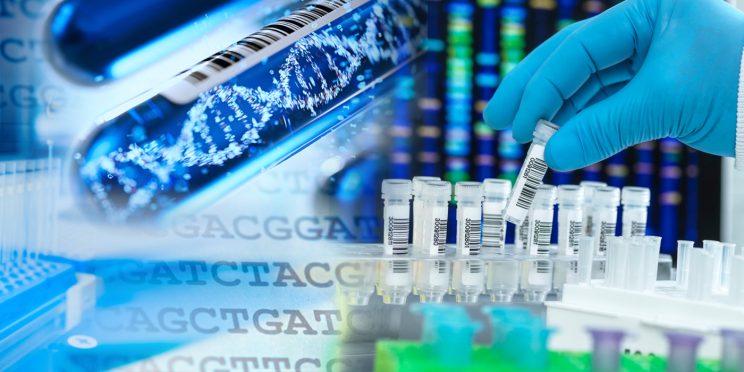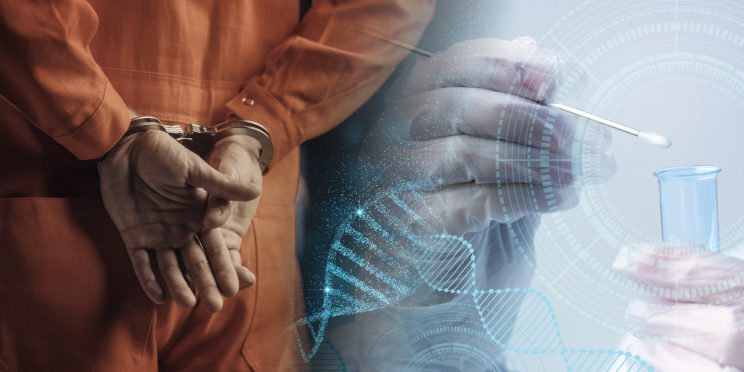This webinar originally occurred on August 20, 2020
Duration: 1 hour
Overview
DNA recovered from forensic and ancient DNA (aDNA) sources is generally expected to be in low copy number and degraded in strand length. However, considering the following equation, it is important to realize that the exact amount of recoverable DNA from any source is unknown:
- Net yield of DNA= Original amount – loss in sampling – loss in extraction/purification – loss due to amplification bias (e.g., due to PCR inhibitors)
This study’s first objectives included estimating: 1) the amount of DNA lost during DNA extraction and purification, and 2) the degree to which molecules are damaged as a result of the extraction method.
Four DNA standards were created from freshly extracted pig (Sus scrofa) liver DNA, representing highly intact genomic DNA to more degraded and low copy number DNA. Ten aliquots of each of these standards were then subjected to seven published aDNA extraction methods and twelve commercial extraction methods, many of which are marketed as suitable for forensic and ancient DNA applications. “DNA in” of the standards was compared to “DNA out” using a Fragment Analyzer that is capable of simultaneously measuring DNA quantity (i.e., concentration) and quality (i.e., DNA strand length).
Some kits performed very well, whereas others were associated with tremendous loss and/or fragmentation. This demonstrated that many extraction methods used to study degraded DNA are far from optimal, and that research should be focused on improving their efficacy.
DNA loss during extraction may impact downstream applications. Considering the case of silica-based extractions, DNA can only be lost via one of two main mechanisms. First, it is possible that not all the source DNA binds to the silica column. Second, it is possible that DNA remains bound to silica during the elution step.
In the second part of this study, DNA standards of known concentration were subjected to the Qiagen DNeasy Blood and Tissue Kit (a silica-based extraction) to identify: 1) how much DNA did not bind to the silica column and 2) how much DNA is lost due to elution inefficiency. DNA standards were created using genomic porcine DNA. “Intact DNA” was represented by Standard 1Z (~20k bp at 100 ng/μl). To represent “degraded DNA,” Standard 3Z was sheared by sonication to ~300 bp. Lower copy number variants of each of these standards were created through dilution of standards to < 1 ng/μl (Standards 2Z and 4Z).
First, following the manufacturer’s protocol for extraction of standards, each spin column was moved into a new collection tube and an additional 200 μl of buffer AE was used to elute DNA that remained on the column. This elution process was repeated multiple times (up to 10 times) from the original column to observe the quantity and quality of DNA that continued to be recovered in the eluates. Characteristics of the DNA that did not initially bind to the columns were determined by repeatedly passing the original purification flow across new spin columns (up to 10 times). DNA bound to each of these columns was also re-eluted up to 10 times. Following this method, 100 eluates were made from each of Standards 1Z and 3Z, and 25 eluates from each of Standards 2Z and 4Z. DNA from these treatments was quantified using a Qubit Fluorometer and eluates were run on a Fragment Analyzer to determine the size and concentration of the DNA fragments that were recovered in each step.
Molecules from all standards were recovered during this process, but detectable amounts varied by standard used. For example, standard 1Z eluates had detectable amounts of DNA in 40 of 100 eluates (Qubit) vs 56 of 100 eluates on the Fragment Analyzer. However, some general trends were detected. First, molecules were detected in the flow through of all standards, especially those at higher concentrations. Second, the larger fragments (over 4000 bp in length) were recovered at a higher frequency in initial elutions in a new spin column. Thirdly, smaller fragment standard (~300 bp in length) eluates were not detectable using the Qubit. This suggests that modifications to the extraction protocol may be needed to recover adequate DNA from low concentration, damaged sources.
Detailed Learning Objectives
- To illustrate that we do not know how much DNA is available from any given sources. Analysts can only know how much is retained through the process of its extraction and purification. With regards to highly compromised DNA sources, there may exist more DNA than is currently recognized.
- To illustrate the influence of various DNA extraction methods on the quantity (i.e., concentration) and quality (i.e., strand length) of resulting DNA eluates.
- To provide a better illustration of the nature of DNA loss from degraded and low concentration sources when utilizing commonly used silica-based extraction methods.
Presenters
- Brian Kemp
- Kristine Beaty
- Cara Monroe
Funding for this Forensic Technology Center of Excellence webinar has been provided by the National Institute of Justice, Office of Justice Programs, U.S. Department of Justice.
The opinions, findings, and conclusions or recommendations expressed in this webinar are those of the presenter(s) and do not necessarily reflect those of the U.S. Department of Justice.
Contact us at ForensicCOE@rti.org with any questions and subscribe to our newsletter for notifications.




